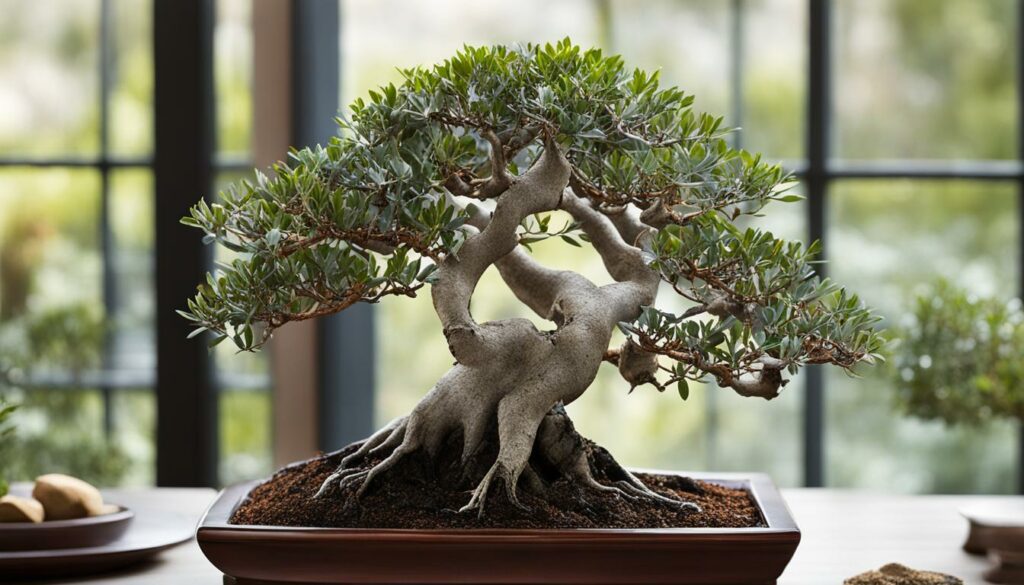Explore the beauty and uniqueness of the Bonsai Tree Species Eucalyptus in this article. Originally from Australia, the Eucalyptus bonsai is prized for its distinctive features and ability to withstand harsh conditions. As bonsai collections continue to grow in popularity, discover why the Eucalyptus bonsai is quickly becoming a favored choice among bonsai enthusiasts.
Key Takeaways:
- Eucalyptus bonsai is a unique and hardy species of bonsai tree.
- The roots of Eucalyptus bonsai can be traced back to Australia.
- Not all Eucalyptus species are suitable for bonsai cultivation, so selecting the right species is critical.
- Careful pruning and maintenance techniques specific to Eucalyptus bonsai ensure proper growth and health.
- Eucalyptus bonsai trees offer distinct beauty, with delicate foliage and captivating bark patterns.
The Origin and History of Eucalyptus Bonsai
Located in the land down under, Australia is the birthplace of Eucalyptus bonsai. With over 700 different eucalyptus species present in Australia, it wasn’t long before bonsai enthusiasts recognized the potential of these unique trees.
Initially, these bonsai trees were used primarily for ornamental purposes in Australia’s major cities. However, their popularity spread quickly, and soon, Eucalyptus bonsai became recognized for their hardiness and adaptability.
Despite their rapid popularity in Australia, it wasn’t until later that Eucalyptus bonsai trees made their way to other parts of the world. Today, with their stunning characteristics and ability to grow in diverse environments, Eucalyptus bonsai trees are a beloved addition to bonsai collections worldwide.
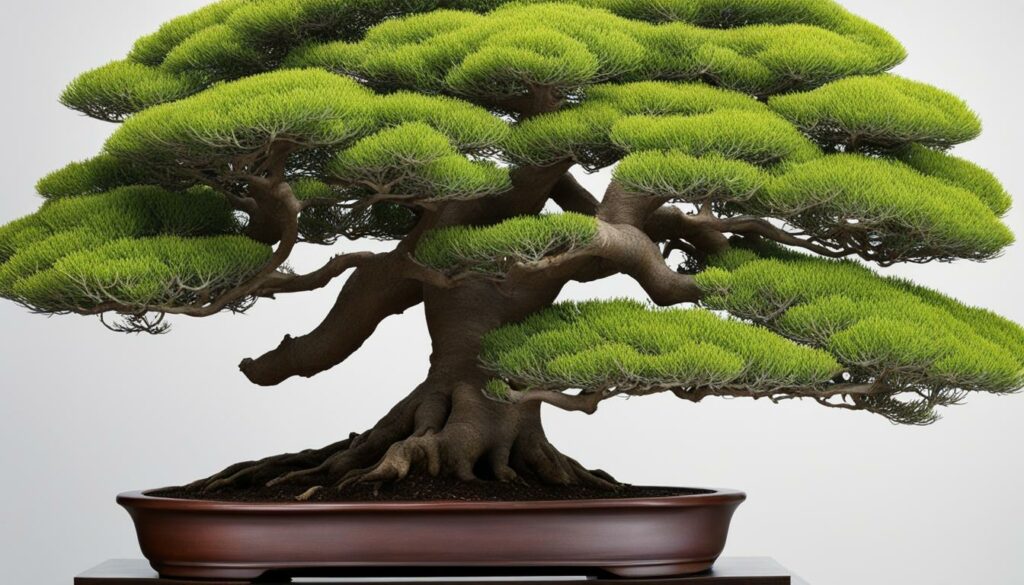
“Eucalyptus bonsai transformed the way we perceive bonsai trees. They are the perfect addition to any bonsai collection and have become the go-to choice for bonsai enthusiasts.” -Michael Josh, Bonsai Enthusiast
Unique Characteristics of Eucalyptus Bonsai
Eucalyptus bonsai are known for their unique characteristics and charming appeal that sets them apart from other bonsai tree species. Here are some of the distinct features that make the Bonsai Tree Species Eucalyptus a prized addition to any bonsai collection.
Delicate Foliage
The foliage of Eucalyptus bonsai is delicate, elegant, and soothing. The leaves are usually narrow, elongated, and elongate to a point, reflecting the vibrant hues of green and silver-gray with a matte finish. These leaves create an organic look, adding depth and texture to the tree, making it an exquisite and alluring addition to any bonsai collection.
Captivating Bark Patterns
The bark of Eucalyptus bonsai is both fascinating and mesmerizing. They have exceptional bark patterns from peeling to the mottled appearance that makes them stand out. The colors of the bark vary from tree to tree, offering an alluring aspect that makes them so unique and mesmerizing.
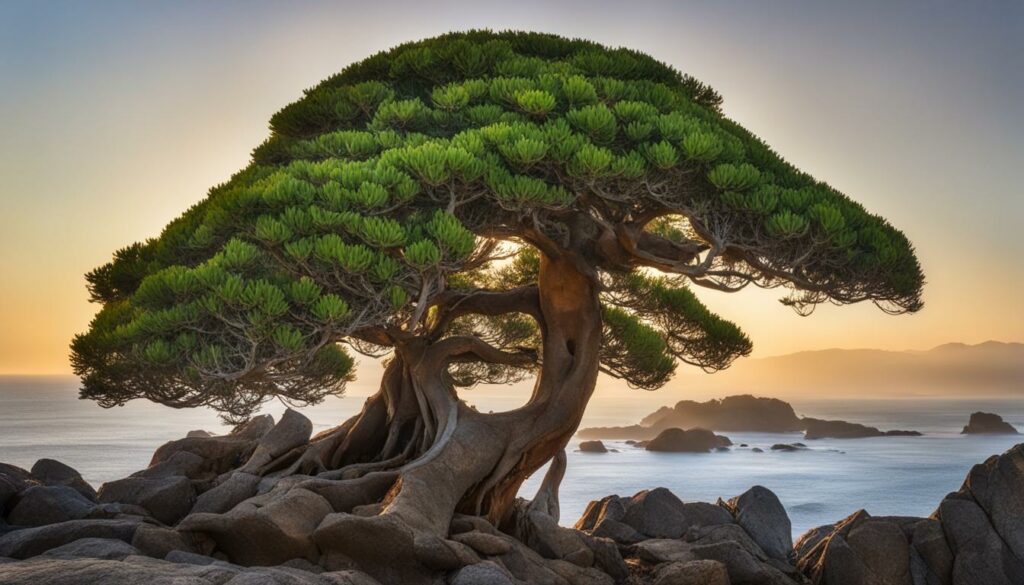
Resilience
Bonsai tree species Eucalyptus is a hardy tree species known for its resilience and flexibility. It can survive extreme weather conditions, such as drought and extreme temperatures, which makes it a suitable choice for beginners as well as experienced bonsai enthusiasts.
Unique Growth Habits
Bonsai tree species Eucalyptus has unique growth habits and characteristics, making each Eucalyptus bonsai a one-of-a-kind masterpiece. These bonsai trees grow quickly, so proper pruning and shaping techniques are required to maintain their charm and appeal.
With its unique characteristics and distinct charm, Bonsai Tree Species Eucalyptus is a must-have for any bonsai collection. Now that you know more about the unique features that make it so special, you can appreciate the beauty of this unique bonsai tree species.
Choosing the Right Eucalyptus Species for Bonsai
When it comes to selecting the right Eucalyptus species for your bonsai collection, not all trees are created equal. Consider the following factors to ensure success:
- Climate: As Eucalyptus is a cold-hardy plant, selecting a species compatible with your local climate is crucial to your tree’s survival.
- Growth habit: Different Eucalyptus species have varying growth patterns, from fast-growing to slow. Identifying the ideal growth habit for your bonsai is essential to achieving the desired shape and size.
- Leaf size: Eucalyptus bonsai leaves can vary in size, with some species featuring smaller or more delicate leaves than others. Choosing a species compatible with your desired leaf size is crucial to achieving the aesthetic you desire.
- Bark characteristics: Eucalyptus bonsai trees are prized for their unique and captivating bark patterns. Researching the bark characteristics of different species can help you choose a tree that aligns with your artistic vision.
Consider consulting with a bonsai expert familiar with Eucalyptus bonsai, who can provide informed recommendations on the best species for your collection.
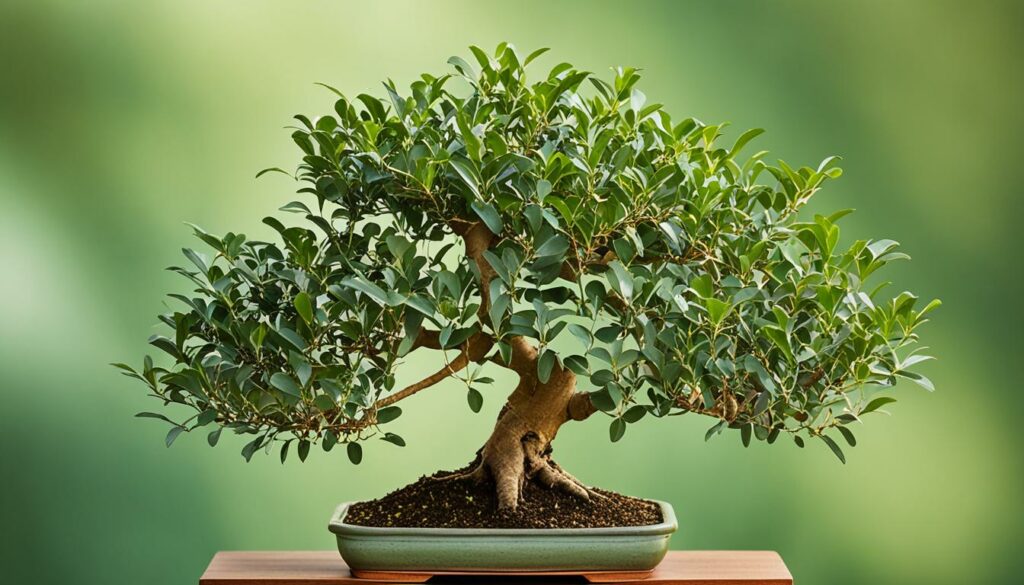
“Selecting the right Eucalyptus species for your bonsai collection can be a daunting task, but with careful consideration and help from an expert, you can achieve stunning results.”
Bonsai Techniques for Eucalyptus Trees
Cultivating Eucalyptus bonsai requires specific techniques to ensure the health and proper growth of the tree. Here are some tips to help you achieve a beautiful Eucalyptus bonsai:
Pruning
Regular pruning is crucial to maintaining the shape and health of your Eucalyptus bonsai. Remove any dead, damaged or diseased branches and foliage. To encourage branching, prune the tips of new growth in the spring.
Wiring
Wiring is an essential technique for shaping your Eucalyptus bonsai. Use a thin and flexible training wire around branches to guide growth into the desired direction. Be sure to remove the wire promptly once the branch has set in place gently.
Pro tip: When wiring, be mindful that Eucalyptus bonsai have brittle branches that can snap with excessive force.
Potting
Transplanting your Australian bonsai is essential every two to three years to keep it healthy and encourage growth. Ensure the pot has drainage holes, and use Bonsai soil mix for best results.
Feeding
Feeding your Eucalyptus bonsai tree is crucial as it requires more nutrients than other bonsai tree species. Use a slow-release fertilizer every ~6-8 weeks during the growing season or liquid feed every two weeks to keep your tree healthy.
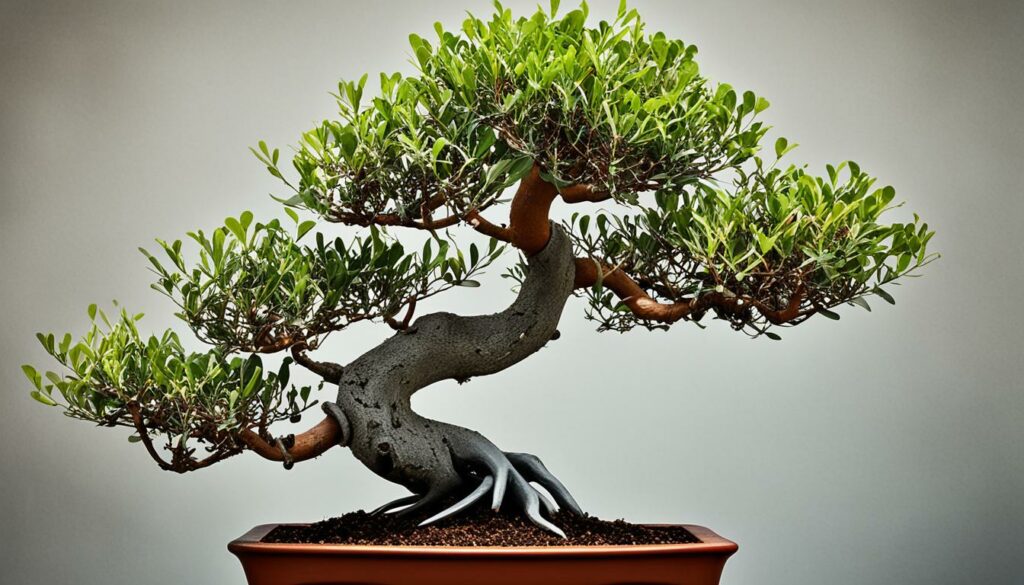
By incorporating these specific techniques, you can maintain the health and beauty of your Eucalyptus bonsai. A beautiful addition to any bonsai collection, the Australian bonsai stands out from the rest with its unique features and hardiness.
Care and Maintenance of Eucalyptus Bonsai
Proper care and maintenance are crucial for ensuring that your Eucalyptus bonsai thrives and remains healthy all year round. By following these essential tips, you can ensure that your bonsai tree stays vibrant and beautiful:
- Watering: Eucalyptus bonsai requires consistent and adequate watering. Water your bonsai tree when the soil feels slightly dry to the touch. Ensure that the water reaches the roots and that excess water drains out.
- Fertilizing: Fertilize your Eucalyptus bonsai once every two weeks during the growing season, and once a month during winter. Use a balanced bonsai fertilizer. Ensure that the soil is moist when fertilizing.
- Pruning: Regular pruning is essential for shaping and maintaining the health of your Eucalyptus bonsai. Prune your bonsai tree during the growing season, and avoid cutting off more than one-third of any branch.
- Protecting from Pests and Diseases: Eucalyptus bonsai is susceptible to pests and diseases, including scale insects and fungal infections. Inspect your tree regularly and take necessary measures such as spraying with insecticide or fungicide to prevent infestations.
By following these simple care and maintenance tips, you can ensure that your Eucalyptus bonsai thrives and remains an attractive addition to your bonsai collection for years to come.
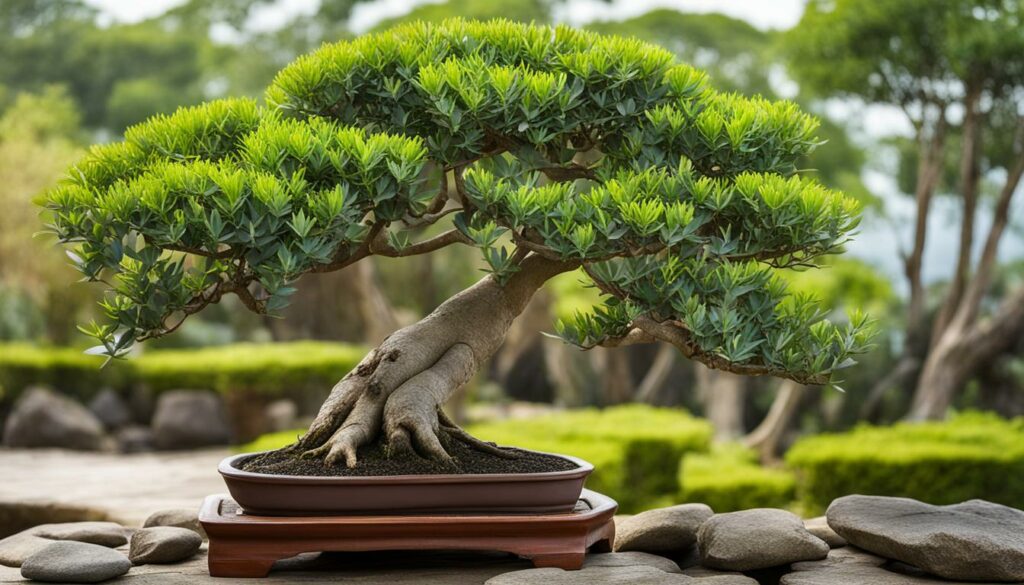
Styling and Displaying Eucalyptus Bonsai
Creating a stylish and visually appealing display is an essential part of showing off the unique beauty of your Eucalyptus bonsai. Here are some tips and ideas to assist you in displaying your unique bonsai:
- On your patio: Place your Eucalyptus bonsai on your patio table surrounded by medium-sized rocks, forming an oasis vibe.
- In the living room: Create a centerpiece on your living room table using a unique table slab as a stand for your Eucalyptus bonsai.
- On your desk: Place a small Eucalyptus bonsai on your desk to enhance your office’s aesthetic.
The Art of Styling Eucalyptus Bonsai
To style your Eucalyptus bonsai, begin by considering the tree’s unique features, including its bark patterns, leaves, and trunk shape. Afterward, follow these techniques:
- Trim the canopy of your Eucalyptus bonsai into a dome shape, revealing its intricate branch structure.
- Expose more of the trunk surface area by removing small branches to bring more emphasis on the textured bark.
- Alter its directional growth by wiring the branches in a new direction to showcase your Eucalyptus bonsai’s striking visual appeal.
Remember to continually monitor your Eucalyptus bonsai’s growth and adjust the styling as necessary to maintain its unique character.
Notable Eucalyptus Bonsai Varieties
When it comes to choosing Eucalyptus bonsai varieties, the options are endless. Each species boasts distinct features that make it a unique addition to any bonsai collection.
The Eucalyptus nitens is a popular choice among bonsai enthusiasts due to its beautiful grayish-blue leaves and intriguing bark patterns. Its hardy nature also makes it a durable addition to your bonsai collection.
If you’re looking for a taller bonsai, the Eucalyptus macarthurii is an excellent option. This Australian native has striking green foliage and an upright growth habit that adds height and dimension to your collection.
The Eucalyptus cinerea, also known as the Argyle apple or silver dollar tree, is another favored Eucalyptus bonsai variety. With its silvery blue foliage and unique bark, it adds a splash of color and texture to your collection.
“Each Eucalyptus bonsai variety has its own unique charm and beauty, making it a wonderful addition to any bonsai collection.”
Comparison Table: Notable Eucalyptus Bonsai Varieties
| Eucalyptus Species | Unique Features |
|---|---|
| Eucalyptus nitens | Grayish-blue leaves, hardy nature, intriguing bark |
| Eucalyptus macarthurii | Upright growth habit, striking green foliage |
| Eucalyptus cinerea | Silvery blue foliage, unique bark patterns |
Whether you’re drawn to the delicate foliage of Eucalyptus nitens, the height and dimension provided by Eucalyptus macarthurii, or the unique color and texture of Eucalyptus cinerea, each variety offers a distinct personality to your bonsai collection.
Growing Your Eucalyptus Bonsai Journey
Now that you have learned about the beauty and unique characteristics of the Bonsai Tree Species Eucalyptus, it’s time to embark on your own Eucalyptus bonsai journey.
Begin by sourcing the right materials for your bonsai tree, including soil, pots, and pruning tools. When selecting your Eucalyptus bonsai tree, consider the species that thrive in your location’s climate and environment.
Once you have your materials and bonsai tree, it’s time to start nurturing and caring for it. Regular watering, fertilizing, and protection from pests and diseases are essential to ensure your bonsai tree stays healthy and vibrant.
As your Eucalyptus bonsai grows, practice specific bonsai techniques like pruning and wiring to shape and guide its growth. Experiment with different bonsai styles and display techniques to showcase your tree’s unique beauty.
Your Eucalyptus bonsai journey may have some challenges, but the joy and fulfillment of growing and caring for your own bonsai tree are immeasurable. Keep learning, seeking guidance from experienced bonsai enthusiasts, and enjoy the journey of growing your Bonsai Tree Species Eucalyptus.
FAQ
Can Eucalyptus bonsai be grown indoors?
While Eucalyptus bonsai can be grown indoors, they prefer a sunny outdoor environment. If grown indoors, they should be placed near a south-facing window to receive ample sunlight.
How often should I water my Eucalyptus bonsai?
Eucalyptus bonsai should be watered thoroughly whenever the topsoil feels slightly dry. Avoid overwatering, as it can lead to root rot. Monitor the moisture level frequently and adjust watering accordingly.
Do Eucalyptus bonsai require special soil?
Eucalyptus bonsai thrive in well-draining soil that allows the roots to breathe. You can use a mixture of bonsai soil, perlite, and sand to ensure adequate drainage and aeration.
How often should I fertilize my Eucalyptus bonsai?
Eucalyptus bonsai should be fertilized every two to four weeks during the growing season, using a balanced, water-soluble fertilizer. Avoid fertilizing during winter or when the tree is dormant.
Can Eucalyptus bonsai be shaped into different bonsai styles?
Yes, Eucalyptus bonsai can be shaped into various bonsai styles, including formal upright, informal upright, cascade, and slanting. The unique characteristics of Eucalyptus trees lend themselves well to these styles.
Are there any pests or diseases that affect Eucalyptus bonsai?
Eucalyptus bonsai can be susceptible to pests such as aphids, spider mites, and scale insects. Regularly inspect your bonsai tree for signs of infestation and treat accordingly. Common diseases include powdery mildew and root rot, which can be prevented by maintaining proper care and hygiene practices.
How long does it take for Eucalyptus bonsai to grow from seeds?
Eucalyptus bonsai grown from seeds can take several years to reach maturity. It requires patience and proper care to nurture these seedlings into healthy bonsai trees.
